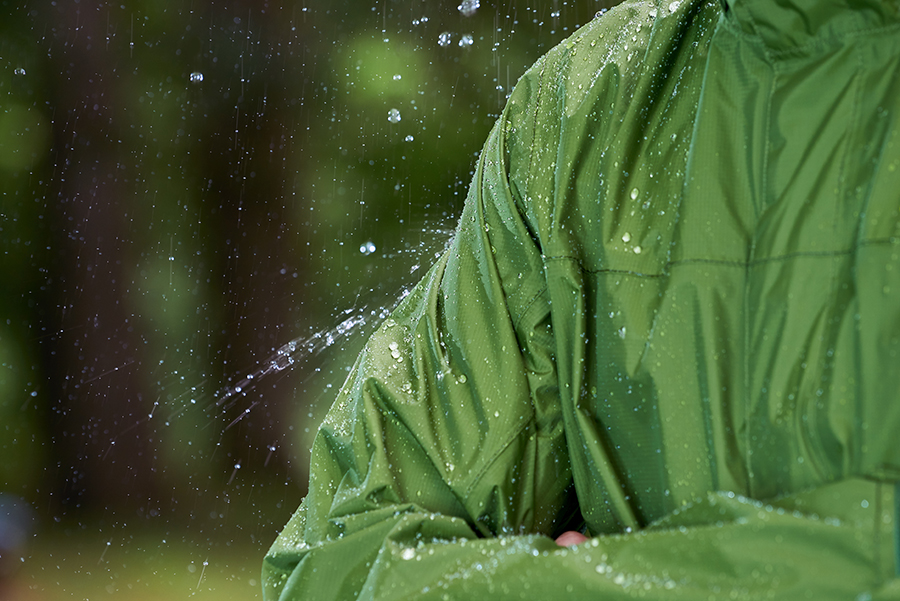Part II of our new materials crib sheet for ORSM 2016.
By Nancy Bouchard, Ph. D.
After addressing the big issues of waterproof breathability and heat regulation in Part I, we continue our exploration of new fabrics and material trends you’ll see at Outdoor Retailer Summer Market 2016. Here is a rundown of everything from micro-climates to visible technology, with a continued focus on sustainability and innovation.
Building a Better Micro-Climate
Developing an improved micro-climate for athletes is at the heart of 37.5, where the company is pushing fabric technology forward through the science of how the body works. 37.5 Founder Dr. Gregory Haggquist notes that the body needs to evaporate vapor. But when clothing blocks vapor, the evaporation rate decreases. Haggquist founded the company in 2000 based on an additive in polymer fibers that interacts with the human body and is reactive and responsive to what it needs to work most efficiently.
“The product results in thermal regulation as the particles capture infrared energy and then use the energy and decide if they should warm or cool,” Haggquist explained. “Wool is what we are looking at now… it dries out micro-climate above the skin and attracts water vapor, but once wool gets saturated that effect stops… But if you blend 37.5 with wool, then you add the characteristics and super-charge wool to make a better product.” The company is working on using the technology in a variety of materials, and next hopes to tackle down. “37.5 is better than dry down, dries faster than dry down and doesn’t need the fluorinated chemistry to achieve the effect,” Haggquist reported.
Also addressing the need for innovative temperature regulating fabrics is L.A.-based Asher Active Athletic Fabrics’ Cool Sport knit collection. “Domestic manufacturers of active apparel often find roadblocks when sourcing innovative fabrics made in the USA,” said Asher Shalom, president of Asher Fabric Concepts. “We created our new line of performance knits to help fill this need.”
Wool Insulation Competes with Down and Synthetics
Micro-climate may be the new catch word for the Outdoor Industry for 2017. Portland Woolen Mills owner and 50-year industry veteran Doug Hoschek has developed a new wool insulation, Ramtect, that creates the driest personal micro-climate just above our skin using super-washed micro-fine merino wool fibers.
“The trend for outdoor cooler-weather clothing is all about lifestyle outdoor wear that’s not as focused on the technical side,” said Hoschek. “The new Ramtect wool fiber works like down or polyester, and has the breathability that doesn’t make you sweat. Ramtect is made from wool that is sourced from U.S.-raised sheep. Fifty percent of the weight of the Ramtect merino wool fiber is pure organic carbon that… produces softer wool fibers. The Ramtect fibers absorb water at 35-percent of their own dry weight and dissipate it gradually.”
“This lightweight insulation for vests and sweaters is equal to down and regular synthetic down,” said noted outdoor writer and photographer Bob Woodward. “It is a biologically sustainable material that really works.”
Down Alternatives
Allied will soon release a new synthetic that the company said is “the closest thing yet to sharing the properties of actual down.” Marketing and Creative Director Matthew Betcher noted, “The consumer is exhibiting an increasing interest in things like adaptability and customization in everything from the products themselves to the entire retail experience. For insulation, this translates into an understanding that one insulation cannot fit all needs.” Allied created Loftech to bridge the gap between lighter-weight synthetic-filled products and a warmer synthetic lofty garment. Another application is extreme weather sleeping bags, where synthetic insulation is preferable to down for water resistance and durability.
According to Betcher, while down has the uncanny ability to be extremely scalable, a hypothetical blow-able synthetic insulation could be used in a wide range of baffles, creating a new type of product line. Allied’s new insulation isn’t intended as a down replacement, but rather to develop unique new products or customizations. Loftech is washable and doesn’t clump and create cold spots, a common issue with lightweight down. Said Betcher, “While they will never equal down in terms of warmth to weight, the benefits of synthetics can now be utilized in a wider range of products.”
Environmentally-Friendly Fabrics and Fibers
Sustainability continues to play an essential role in the outdoor industry, specifically as it relates to manufacturing processes and recycled content. PrimaLoft President and CEO Mike Joyce explained that PrimaLoft Gold Insulation Eco, a collaboration with Patagonia, “matches all of the same performance characteristics as the original while introducing 55-percent post-consumer recycled material.” It’s also lightweight, compressible and warm even when wet.
Visible Technology
At Event, developers agree that seeing is believing. New for spring/summer 2017 is a light and translucent tricot that covers the waterproof membrane, revealing its outward-facing web pattern. Credit goes to Italian lamination specialist ITTTAI, Event’s partner and distributor of technical fabrics that use Event fabrics’ technologies. “Brands continue to seek interesting patterns and textures to differentiate their products,” said Chad Kelly of Event fabrics.
Matching up Silk and Merino
For spring/summer 2017, Ibex is introducing Lumen, a 140-gram merino/silk, created with a 17.5 micron wool and combined with high-quality silk. The company is also introducing Videria, a blend of 76 percent, 18.5-micron Merino wool and 35 percent polyester. The breathable, moisture-managing performance fabric is versatile, lightweight and washable.
Photo courtesy Chemours











